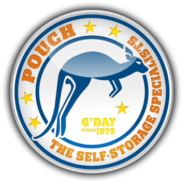-
When it’s Time to Consider Choosing Long-Term Storage
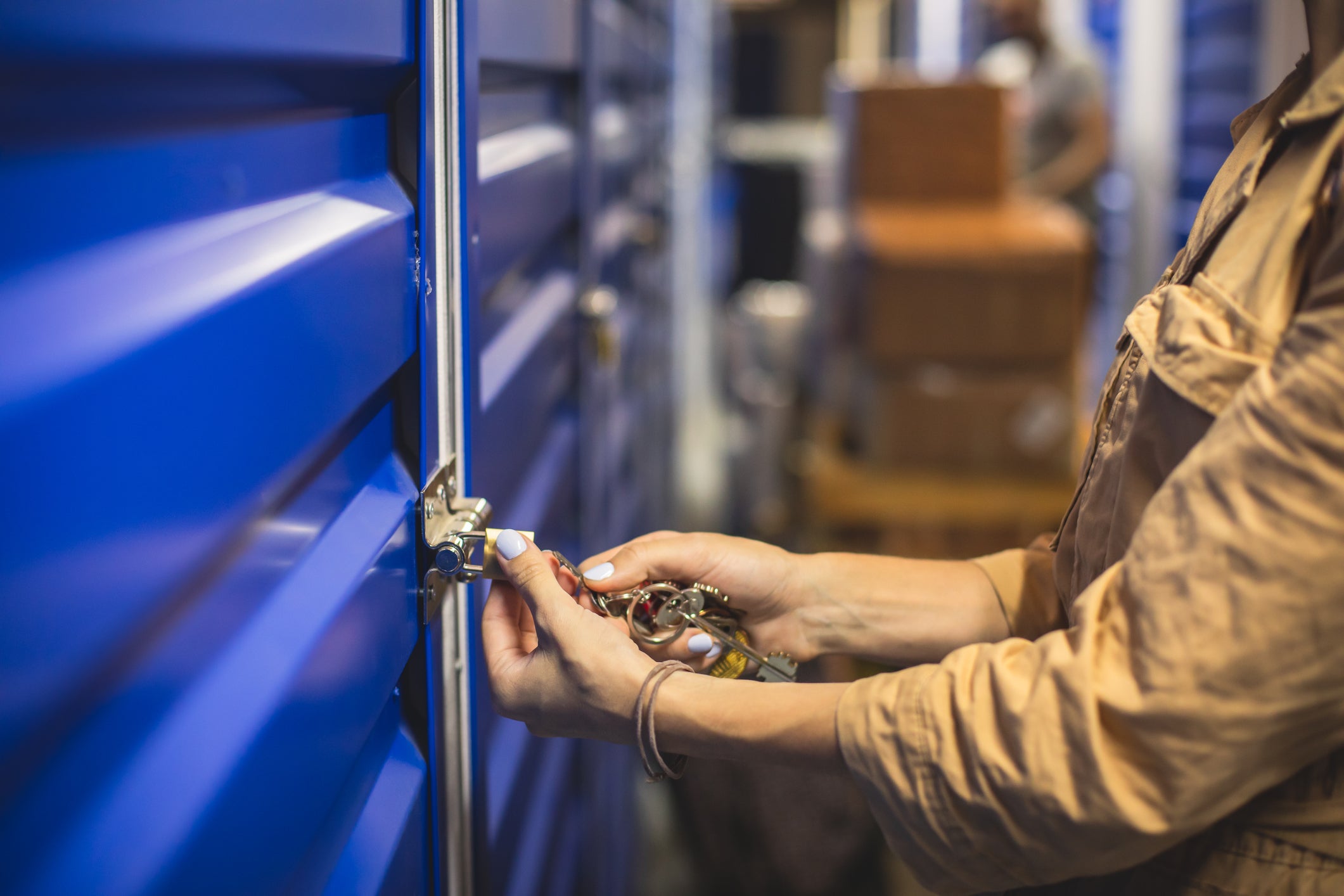
Sometimes, you need storage for a little while. Maybe you’re moving, changing offices, or just holding on to some furniture for someone. There are times, though, when short-term storage is not sufficient. Here, we look at some reasons you might need long term storage, as well as offering some tips for choosing a storage unit and preparing your things to be stored for an extended period of time.
What is long-term storage? It’s the kind of storage you need if you’ll be keeping things in a storage unit for more than three months. It’s important to find a clean storage unit near your home, but climate control is not as important for short-term storage as it is when you’ll be storing things for several months or even years. Without a space that regulates the temperature and humidity, you will be risking damage to your belongings from mold and mildew. You’ll also want to cover your furniture in long-term storage to protect them, while this is not necessary for short-term storage.
If you are storing seasonal items, like Christmas decorations, it’s unlikely that you will need them within 10 to 12 months. In that case, it’s smart to choose a storage unit appropriate for long-term storage. The same holds true for sporting equipment you only need once a year. A military family might need to store their things when they’re taking an overseas assignment, and those who winter in other states might want to store some of their furniture or a vehicle while they’re away.
No matter how long your things will be in storage, there are a few factors you should consider. Look for a storage unit that’s the right size to store all of your things, so you don’t end up in a bind when you try to pack it. Consider how much access you’ll need to your belongings and make sure the facility you choose will be convenient for you. Look into the facility’s policies and reputation so that you can be sure your items will be well-protected while you’re away. Make sure the cost of the unit won’t overtax your budget in the long run, and consider storage insurance to protect your belongings from damage or theft.
The way you pack your storage unit will vary based on how long you plan to store your things. No matter how long they’ll be there, your items should be carefully labelled and packed to protect them from harm. You should make sure you can retrieve things from your unit easily and keep a detailed inventory of what is in the unit. If you’re packing for short term storage, try to leave a pathway in the center of the unit so that you can easily move things in and out. Try to arrange your things against the walls, using vertical space to save on floor space. If you’re storing things long term, invest in high-quality boxes or vacuum sealed bags. This will help protect your items from humidity and other causes of damage. It’s a good idea to stack your things on pallets if you can, to allow better airflow through the unit and protect against condensation and water damage.
Whether you need long or short-term storage, you can rely on Pouch Self Storage. We’ve been operating mini-storage facilities since 1979 and we’re committed to keeping our clients’ belongings safe. Founded by John Yelland, who hails from Australia, Pouch Self Storage is named in honor of the kangaroo’s pouch- nature’s safe and secure storage spot. We’re an industry leader in design, building, and maintenance of self-storage facilities, and we strive to give our occupants the most advanced security systems available. At our nine Southern California facilities, you’ll find state-of-the-art computer monitoring systems that allow our self-storage managers to monitor the opening and closing of every storage unit door, 24 hours a day. For more information, call (800) 378-4598 or contact us through our website.
-
How To Organize a Storage Unit
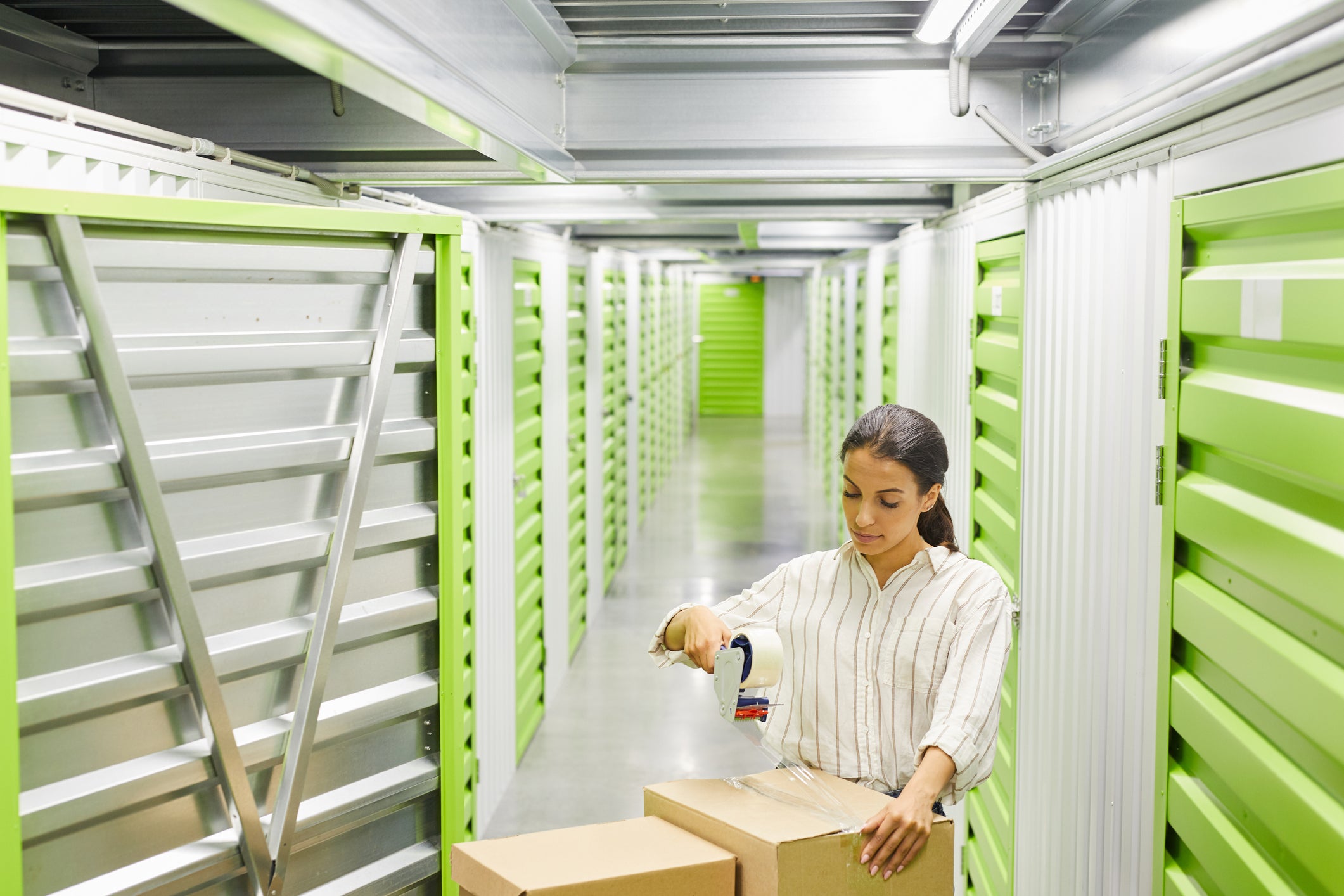
When you’re renting a storage unit, you will want to make the most of your allotted space. In addition to maximizing your square footage, however, it’s crucial to keep your belongings not only well protected but also accessible. When you need to retrieve something, you don’t want to have to turn your storage unit upside down looking for it or, even worse, dig through boxes. Here, we offer some organizing tips for storing your things efficiently.
- Choose the right sized space. How much space do you need for the belongings you intend to store? It’s extremely frustrating to begin packing a storage unit and realize it’s the wrong size, so make sure you do your homework before you rent a unit. Make a list of the items you wish to store and estimate how much space they’ll occupy. You can find storage calculators online to help you with this process. In general, units come in 10 by 10, which is about half the size of a one-car garage, 10 by 20, which will hold the contents of a three bedroom apartment, and 10 by 15, which falls in the middle. Some storage facilities also offer 5 by 5, 5 by 10, and 5 by 15 feet units and, on the other end of the spectrum, 10 by 25 and 10 by 30 units, large enough for a houseful of items. If you’re in doubt about the size you’ll need, it’s usually safer to go one size higher. When you’re choosing a storage unit, consider other factors, too, like whether you need a space that’s climate controlled.
- Keep a detailed inventory. While you may be able to easily recall which large pieces of furniture you have in storage, you might just as easily forget some of the smaller items. Having an accurate inventory helps you to be able to locate things when you need them, without digging through your boxes. It can also be helpful to have a map of your unit, detailing where items are located.
- Pack your items carefully. Consider clear storage bins rather than cardboard boxes. These do a better job of protecting your belongings, and they also make it easier to see what’s in the box. Know how to pack each item properly. Store electronics by removing all cords and cables and enclosing them in separate waterproof bags, then covering your equipment to keep out dust and dirt. Store clothes by folding or rolling and placing them loosely into your boxes, with silica packets to keep them dry. You can also hang clothes in garment bags on a rolling cart or in a wardrobe box. Appliances should have the hoses and tanks removed and drained before storage, should be dry before storing, and should be sprayed for pests. If you’re storing a refrigerator, leave the door ajar, and if you’re storing your grill, deep clean it and remove the propane tank before storing. Store delicate items by wrapping them in paper or bubble wrap and packing them in a study box, and store books by wrapping them in acid-free archival paper and packing them flat, not with the spine or binding pointing up.
- Label everything. Be specific. If you’re looking for a cookbook, you’ll find it much more easily if you have a box labelled “cookbooks” instead of six boxes labelled simply “books.” Label the boxes on more than one side, in case one side is obscured once everything is in storage.
- Leave space to walk. Leaving at least one pathway through your storage unit will allow you to access the things you need more efficiently, without having to drag things out or climb over things.
- Store things in a logical arrangement. Disassemble furniture and store these pieces upright, to maximize your space. Store large, heavy items on the bottom, going lighter as you go up, and make as much use of vertical space as you can. It can be helpful to use shelves if you have a number of small items to store, and it’s wise to leave a step ladder in the unit to help you reach things. Store things you’ll need to use more frequently towards the front of the unit, so you can access them more easily.
Pouch Self Storage. We’ve been operating mini-storage facilities since 1979 and we’re committed to keeping our clients’ belongings safe. Founded by John Yelland, who hails from Australia, Pouch Self Storage is named in honor of the kangaroo’s pouch- nature’s safe and secure storage spot. We’re an industry leader in design, building, and maintenance of self-storage facilities, and we strive to give our occupants the most advanced security systems available. At our nine Southern California facilities, you’ll find state-of-the-art computer monitoring systems that allow our self-storage managers to monitor the opening and closing of every storage unit door, 24 hours a day. For more information, call (800) 378-4598 or contact us through our website.
-
Storage Guide for a College Student

If you’re in college, it’s likely that you’ve hauled quite a bit of stuff from home into your new dorm or apartment. When the school year is over and it’s time to head out for the summer, you probably won’t want to have to take all of those things with you. What’s the solution? Get a storage unit for the summer! Using self-storage is the perfect way to minimize what you have to take back and forth, while making sure you have what you need when school starts back up in the fall.
What kind of storage unit will you need? Storage units can typically hold at least one room full of furniture. For students living in two or three-bedroom apartments, a larger unit may be a better option. Which size unit will you need? A 5’ by 5’ storage space is perfect for holding a loveseat, boxes, and home décor, while a 5’ by 10’ unit will hold a sofa or twin bed, along with some smaller furnishings and décor. You should also consider a climate-controlled storage unit, especially if you’re storing clothing, papers, or furniture. This will protect your furniture from the elements, as well as mold and mildew.
No matter what you are storing while you’re away, make sure it’s packed correctly.
- Furniture: Disassemble what you can, and pack small things in larger things when you can’t. For instance, take apart a bed frame, but store small objects in your dresser drawers. When storing a mattress, wrap it in two fitted sheets or store it in a plastic mattress bag to protect it.
- Kitchen items: If you have pots and pans, glass or plastic storage containers, dishes, glasses, and silverware, there’s no need for you to bring those things back home with you. Instead, store your kitchen for the summer. Put fragile items in boxes lined with bubble wrap or packing paper, wrapping breakables carefully and storing heavier items on the bottom. Put extra filling material in the tops of the boxes, so that you can stack them without the risk of breaking any of their contents.
- Bedding: You probably have bedding that was purchased specifically for your room at college, especially if you live in the dorm. There’s no need to carry those things home and try to find a place for them in your parents’ house over the summer. Instead, pack your comforters, sheets, blankets, and extra pillows in large boxes and store them while you’re away. Don’t pack anything made of cloth in plastic bags, because moisture can become trapped in the bags and cause mildew.
- Books and school supplies: These supplies can be bulky, so they’re best left behind when you leave campus. Consider selling any books you won’t need in the future, but keep everything you will need next year in a self-storage unit. Use small, sturdy boxes to pack books, and place them in the box horizontally, never vertically, because storing them vertically can damage their spines.
- Seasonal clothing: Heavy winter coats, gloves, and hats will be of no use to you over your summer vacation. Instead of weighing yourself down with unnecessary clothing, wash or dry clean it carefully and pack it up until you need it again. Clear, plastic boxes are great for preventing damage to your clothing while it’s stored, or you can use wardrobe boxes, designed specifically for hanging clothes.
- Sports equipment: If you play a winter sport and will need your gear at school, you can leave it when you go home for the summer. Sporting goods can be expensive, so pack everything carefully, making sure not to damage breakable items and securing everything in appropriate containers. As with all the other things you store, take care to clean your sports equipment before you pack it away for the summer.
Especially if your hometown is far from where you go to school, leaving things in self-storage can help lighten your load and make moving off and back onto campus go more smoothly. When you’re ready to find a great self-storage facility, choose Pouch Self Storage. We’ve been operating mini-storage facilities since 1979 and we’re committed to keeping our clients’ belongings safe. Founded by John Yelland, who hails from Australia, Pouch Self Storage is named in honor of the kangaroo’s pouch- nature’s safe and secure storage spot. We’re an industry leader in design, building, and maintenance of self-storage facilities, and we strive to give our occupants the most advanced security systems available. At our nine Southern California facilities, you’ll find state-of-the-art computer monitoring systems that allow our self-storage managers to monitor the opening and closing of every storage unit door, 24 hours a day. For more information, call (800) 378-4598 or contact us through our website.
-
Things to Consider Before Renting a Storage Unit
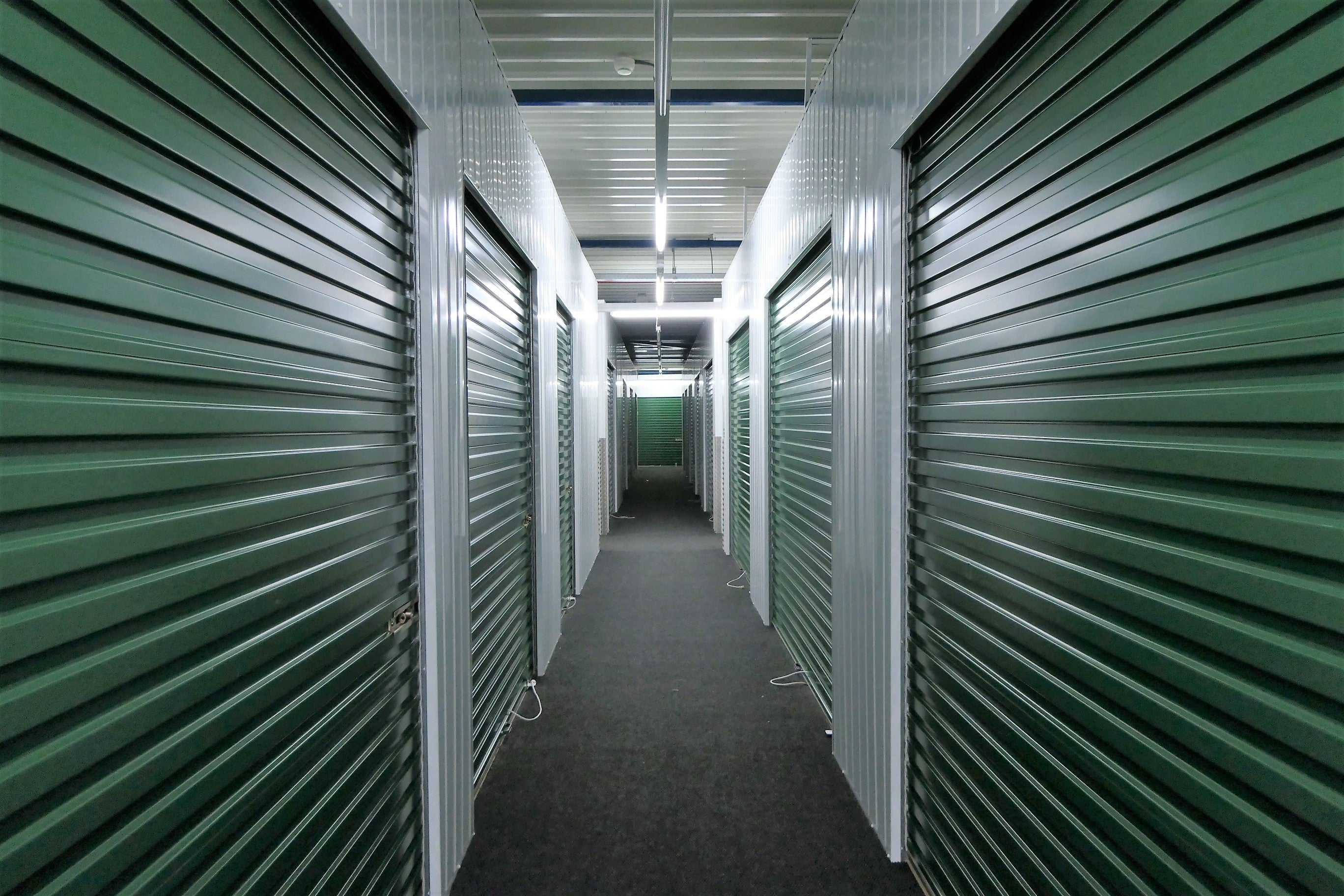
Have you ever rented a storage unit? They’re an excellent solution for storing things either short or long-term, and they’re secure and convenient. If this is your first time renting one, there are some things you should know.
- First, let’s talk about how storage units work, because the process is typically similar regardless of your storage company. You find a storage facility near you, and sign a contract to secure a unit within that space for a specified amount of time. Some companies have a three-month minimum requirement, while most others rent units on a month-to-month basis. You’ll need government-issued ID to rent the unit, like a driver’s license, military ID, passport, or state ID. Read your contract thoroughly before you sign it, so you make sure you’re clear on the terms. For instance, you’ll need to know things like when your payments are due and how much notice you’ll need to give before moving out of your unit.
- Rules for storage units are basically common sense. You can’t live in your storage unit or conduct business there, and you’ll be restricted in terms of what kinds of items you can store. Essentially, nothing hazardous to your unit or the units around you can be stored in a storage unit, nor can anything illegal.
- There are a few different reasons people rent storage units. Some people need seasonal storage of things like holiday decorations or sports gear. Others need temporary storage, during a move or a renovation. Sometimes, people who are decluttering or downsizing need a place to store things, and sometimes when a family member comes to stay for a while, extra space is needed to store what used to be stored in the guest room. College students often store their dorm room furnishings over the summer, and members of the military use self-storage when they’re deployed. People often choose self-storage for a car, boat, or RV.
- There are two different types of storage. Full-service storage involves a company that will pick up a customer’s belongings and transport them to the storage unit. Often, customers can request a pickup or a return on a smartphone app, which is very convenient. Full-service storage facilities take pictures to document what you’re storing and create an online inventory list. Self-storage is a more popular option because it’s more affordable but still safe and secure. Self-storage customers take their things to the storage unit themselves, and pick things up when they need them.
- Before you rent a storage unit, consider your needs carefully. What do you need to store? Do you need climate control? What size unit do you need? Self-storage units typically come in at least five sizes: 5’x5’, 5’x10’, 10’x10’, 10’ by 15’, and 15’ by 20’. The size you need will be based on how much you need to store, and you can find online calculators to help you estimate the appropriate size.
- Do you need indoor, outdoor, or climate controlled storage? Indoor storage units are sometimes climate-controlled and sometimes not. Outdoor storage units are covered and locked, with drive-up access. They’re good for large items and vehicles, but indoor storage is better for anything valuable or fragile. A climate-controlled storage unit is best for storing clothing, furniture, and anything else you want to protect from extreme temperatures, mold, and mildew.
- Assess the amenities before deciding on a storage unit. How accessible will your storage unit be? Some facilities offer 24-hour access, while others are closed on certain days, like Sundays or holidays. It’s important to find a facility with hours that are convenient for you. You’ll also want to make sure the facility you choose is secure. Is there in-person surveillance? How safe and secure is the facility? Pay attention to the location and the lighting, and make sure you feel safe on the property.
- Prepare your things before you store them. Acquaint yourself with the rules and restrictions about what you can store before you pack up your things. Then take the time to create a detailed list of everything you’re storing. Taking inventory can help you remember what you’ve got in storage, and it can be useful if you ever need to file an insurance claim. Clean all items before placing them in storage, and disassemble furniture to make better use of your storage space. Pack everything carefully in high-quality boxes, cushioning it as you would for a move, and label everything clearly. Place items strategically so that you’ll be able to find things easily and nothing will be damaged.
- Consider insurance. Having your items properly insured will give you the peace of mind that comes with knowing that you’re protected in case of breakage or theft. This does not necessarily mean, though, that you need to purchase storage insurance. While many storage facilities offer affordable self-storage insurance options, you may already be covered by your homeowners or renters insurance.
When you’re ready to rent a self-storge unit, choose Pouch Self Storage. We’ve been operating mini-storage facilities since 1979 and we’re committed to keeping our clients’ belongings safe. Founded by John Yelland, who hails from Australia, Pouch Self Storage is named in honor of the kangaroo’s pouch- nature’s safe and secure storage spot. We’re an industry leader in design, building, and maintenance of self-storage facilities, and we strive to give our occupants the most advanced security systems available. At our nine Southern California facilities, you’ll find state-of-the-art computer monitoring systems that allow our self-storage managers to monitor the opening and closing of every storage unit door, 24 hours a day. For more information, call (800) 378-4598 or contact us through our website.
-
How to Move Out of a Storage Unit
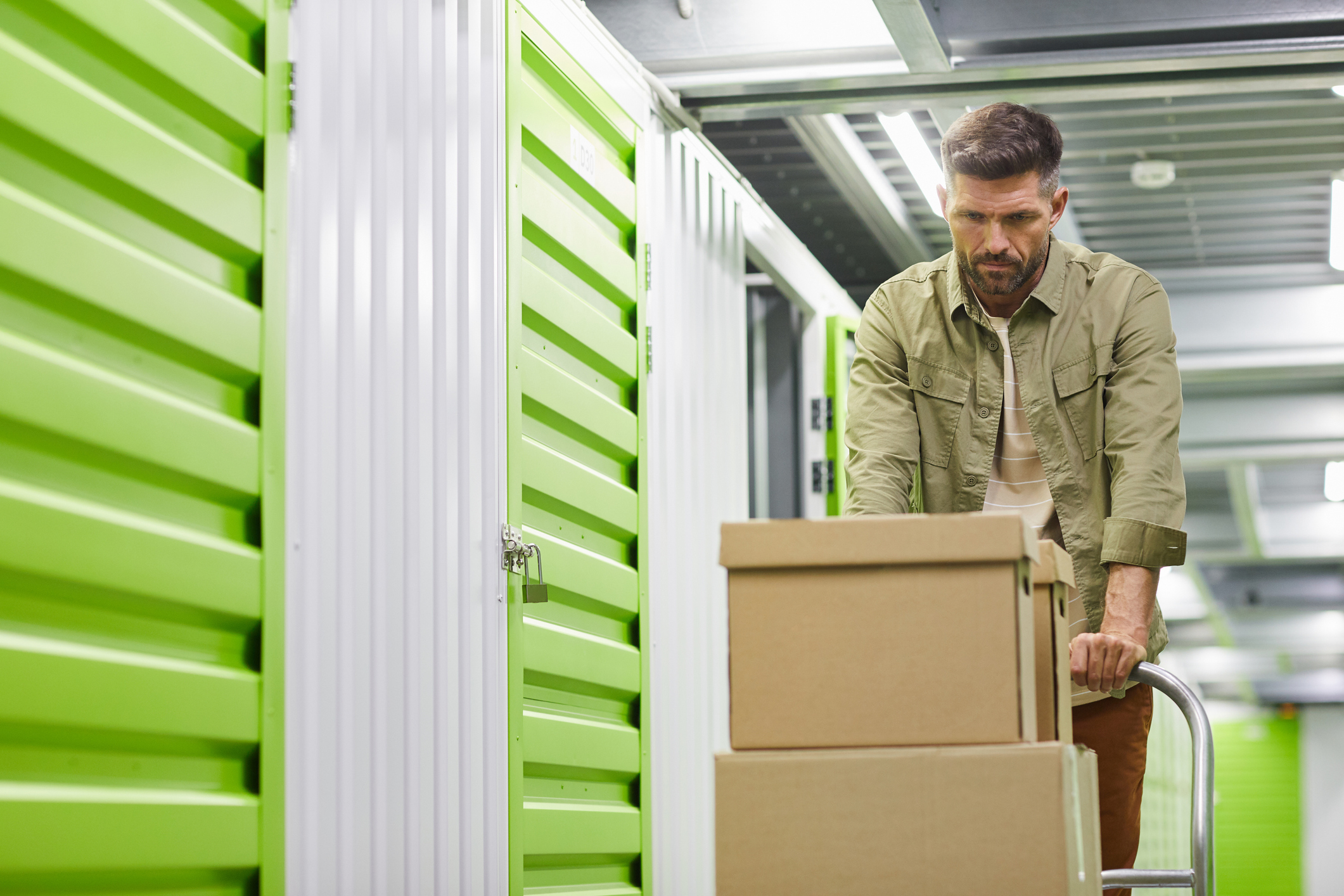
Waist up portrait of handsome bearded man loading cart with cardboard boxes into self storage unit, copy space
Keeping some of your things in self-storage is extremely convenient, but it’s not typically a permanent solution to storage problems. Most self-storage facilities offer contracts on a month-to-month basis, and there’s good reason for that. People store their things because they want to clear clutter temporarily to sell a house, they need to store furniture when remodeling, they’re in the middle of a move, and many other reasons that don’t involve keeping the storage unit for the long term. When you’re ready to clear out your storage unit, here are some tips for managing the process smoothly.
- Give advance notice of your move. Typically, storage facilities require a call or written notice to inform them of your intention to vacate the storage unit. Make sure you know your facility’s policy, so you don’t need to pay for time you weren’t using your unit.
- Decide where your belongings are going. Before you pull all of your things out of storage and bring them to your home, make sure you have a place for everything. One great way to do this is to visit the storage unit before you start taking things out and take pictures of everything that’s there. You can then look at these pictures once you get home and make a plan for all of the items.
- Bring a big enough vehicle to move everything. Don’t waste trips running back and forth with a too-small vehicle. You might need to rent a truck or van for a day, but it’s well worth it. If any of your items are heavy, bring someone to help you transport them.
- Leave the space clean. It’s usually required for tenants to clean out their storage units before leaving. This is not as daunting as it may sound; typically, it just means removing all of your things and sweeping.
- Take your lock with you. It’s easy to forget a little thing like that, but it’s important to unlock the unit and remove your lock, so that the storage facility staff will be able to access the unit.
- Let management know you’ve gone. Once you’ve removed all of your things, confirm your exit with the facility’s manager before you leave.
Now you know how to move out, but if you ever need to move your things back into a storage facility, choose Pouch Self Storage. We’ve been operating mini-storage facilities since 1979 and we’re committed to keeping our clients’ belongings safe. Founded by John Yelland, who hails from Australia, Pouch Self Storage is named in honor of the kangaroo’s pouch- nature’s safe and secure storage spot. We’re an industry leader in design, building, and maintenance of self-storage facilities, and we strive to give our occupants the most advanced security systems available. At our nine Southern California facilities, you’ll find state-of-the-art computer monitoring systems that allow our self-storage managers to monitor the opening and closing of every storage unit door, 24 hours a day. For more information, call (800) 378-4598 or contact us through our website.
-
Temporary Housing Options for the Next Time You Move
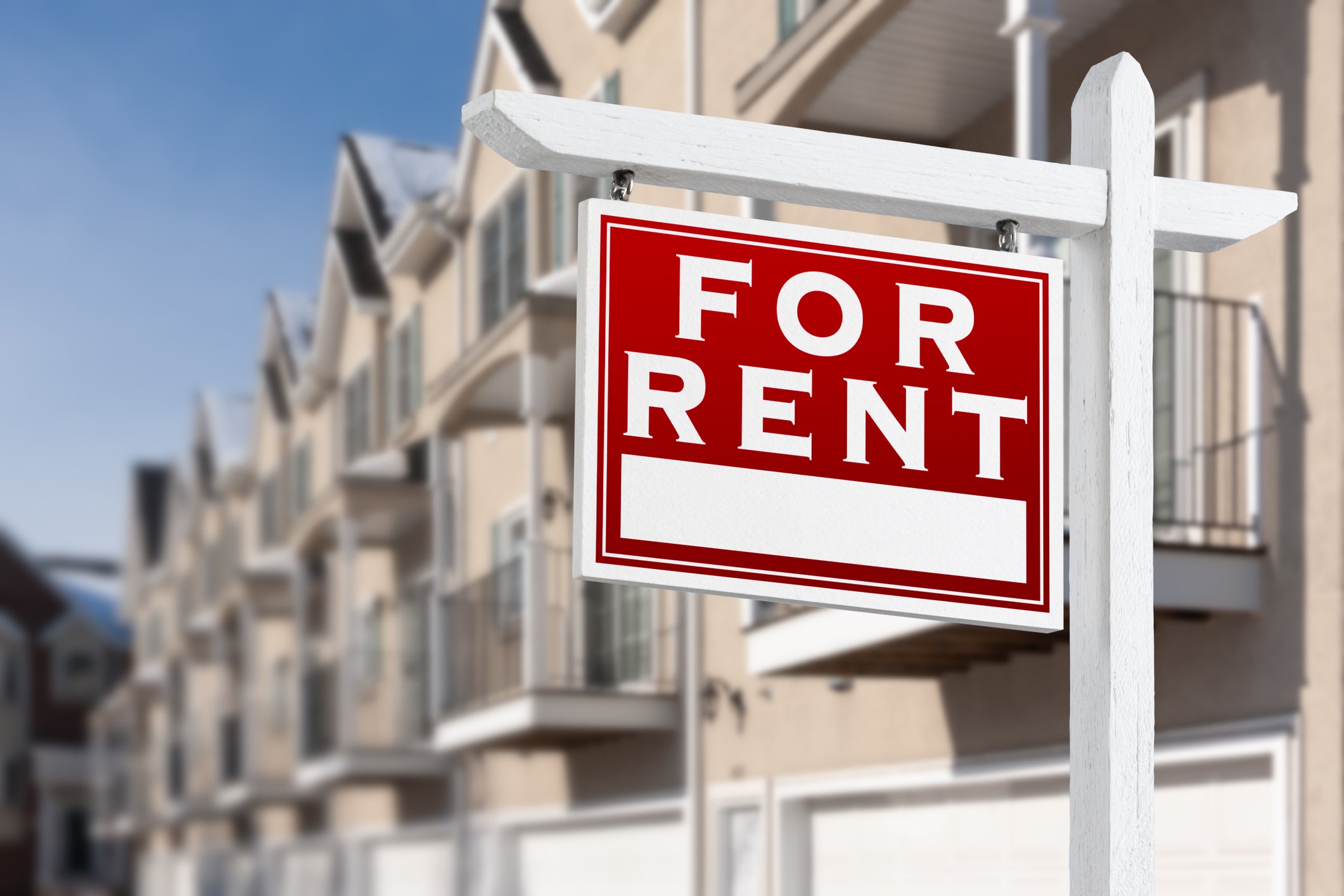
Moving can be stressful, and it’s often complicated. There are many reasons people may need temporary housing during a move, whether it’s because they haven’t found new housing, or the new home isn’t ready for occupancy. If you’re in the position of finding stopgap housing, we have some suggestions for where you might want to consider staying until you can get into your permanent home.
- Rent until you’re able to buy. You can find a variety of rental homes on the market, with leases that run for 12-24 months or simply go on a month-to-month basis. Renting a house can be a great option if you are new to the area and want to get the “lay of the land” before committing to a home purchase. Just make sure you read your lease carefully before you sign.
- Consider a vacation rental. Airbnb and VRBO are examples of sites that allow you to rent a home temporarily, as a short-term or long-term vacation home. These are typically fully furnished, so you won’t need to bring many things with you.
- Stay with someone you know. If you have friends or family members in the area, it may be worthwhile to discuss the possibility of staying with them while you find a place to live. Make sure you’re on the same page about expectations and how long you’re planning on staying.
- Book yourself into an extended stay hotel. Extended stay hotels can be affordable options, providing long-term accommodations, usually with a bed, living space, and kitchenette. As a bonus, you may enjoy hotel amenities like cleaning service, internet access, on-site laundry and gym, and a breakfast buffet.
- Inquire about corporate housing. If you are moving for work, talk to your company about corporate housing. Many times, large companies either rent or own furnished homes or apartments for employee use. If yours doesn’t, ask about reimbursement for relocation expenses.
Of course, once you’ve decided where you’ll stay, what can you do with all of your stuff? If you rent an unfurnished home, of course, you’ll take your things with you. Often, however, people choose to rent a home that’s smaller than their previous house and their future home. If that’s your situation, you may still need to find a place to keep some of your things while you’re waiting to move into your permanent abode.
- You can get the moving company to store your things. If you’re hiring a full-service mover to transport your household goods to a new location, it’s wise to inquire about their ability to store things for you.
- Self-storage is often the most convenient option. Self-storage is the best option for a lot of people, because it allows you to store your items securely, yet have access to your items whenever you need it. Additionally, storage units can typically be rented on a month-to-month basis, which is convenient if you don’t know how long you’ll be in temporary housing.
If you’re looking for self-storage in Southern California, choose Pouch Self Storage. We’ve been operating mini-storage facilities since 1979 and we’re committed to keeping our clients’ belongings safe. Founded by John Yelland, who hails from Australia, Pouch Self Storage is named in honor of the kangaroo’s pouch- nature’s safe and secure storage spot. We’re an industry leader in design, building, and maintenance of self-storage facilities, and we strive to give our occupants the most advanced security systems available. At our nine Southern California facilities, you’ll find state-of-the-art computer monitoring systems that allow our self-storage managers to monitor the opening and closing of every storage unit door, 24 hours a day. For more information, call (800) 378-4598 or contact us through our website.
-
Inside Look at the Self-Storage Industry
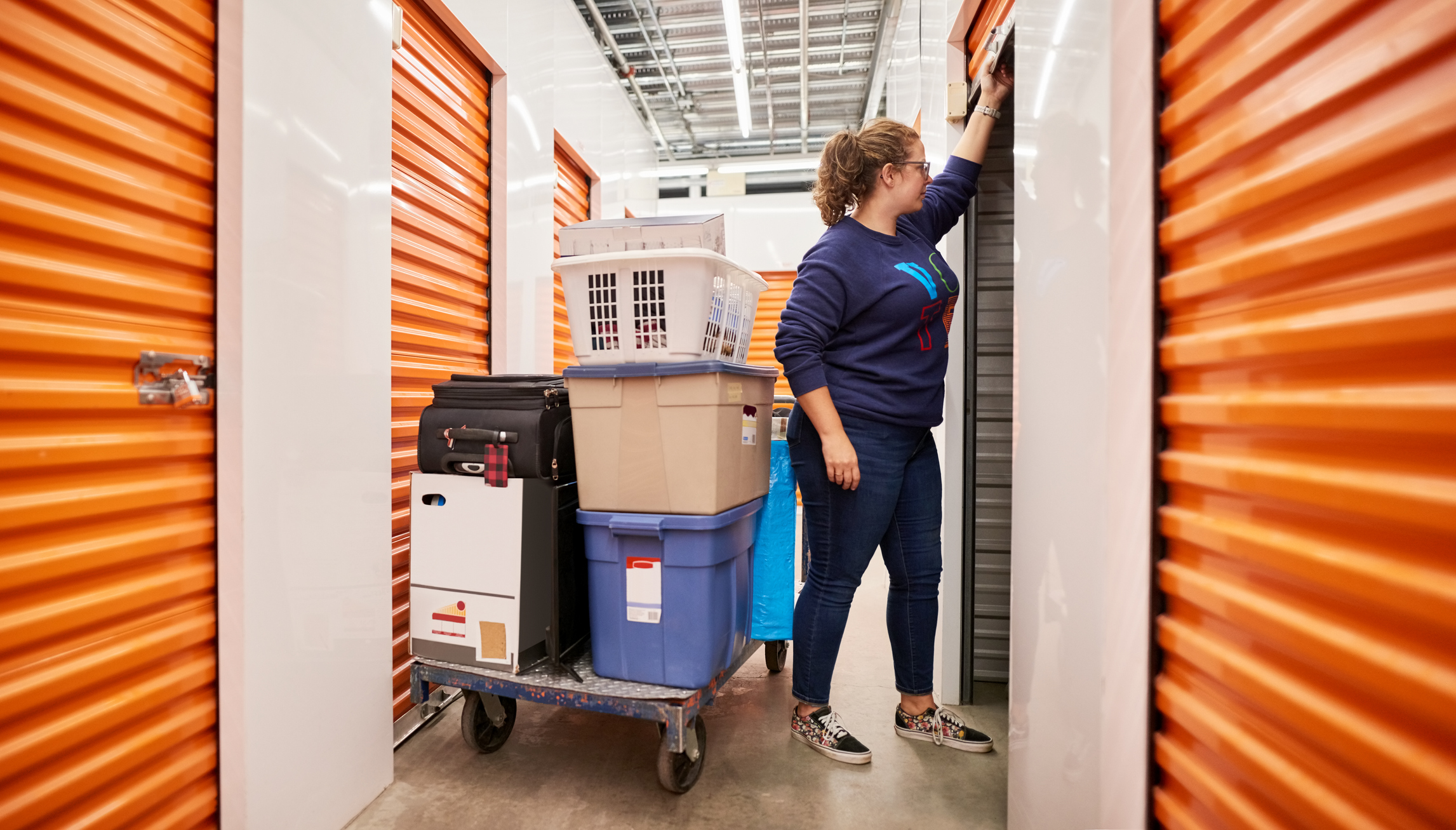
If you’re considering storing your things in self-storage, you might want to know more about the state of the industry. Is it a business that’s likely to remain viable over the next several years? Are you safe leaving your things there, or do you need to worry that your self-storage facility will close, and you’ll have to scramble to find another place for your belongings? We’ve got good news! The self-storage industry is a very profitable one, and it’s likely to continue to grow in value over the coming years. In 2020, the worldwide self-storage market had a value of $48.02 billion, and it’s expected to continue to grow at a compound annual growth rate of 5.45 percent between 2021 and 2026. It’s clear that self-storage is here to stay, so feel free to plan for long-term use of your storage unit. Why is self-storage doing so well?
- Nearly everyone could use a little bit of extra space. It seems like no matter how large a house is, there are always excess items that need to be handled. Since storage issues are so common, self-storage is a necessary industry, providing a convenient solution. While those in the rental house business often have trouble finding tenants, this is never an issue for self-storage.
- Once people move their things into a storage unit, they’re not likely to move them back out quickly. Having packed everything and carried it to a storage unit, people are not going to shift it to a different one because they found a better price. Rather, people tend to rent storage units and keep them for a long time, possibly longer than they originally intended.
- Pandemic-driven shifts have propelled self-storage to further success. Offices are downsizing, and people are increasingly working from home. On both sides of this equation, there’s a need for self-storage, as business owners store office furniture to lower their overhead on their office space and workers store home furnishings to make room for a newly necessary home office. What’s more, many families have found themselves in a position to downsize, which creates a need for self-storage for the residential sector.
- Baby Boomers and Millennials are a boon to the self-storage industry. As they grow older and leave the workforce, many Boomers are downsizing or migrating to other states, yet don’t want to give up their possessions. Millennials are flocking to urban areas, where they’ll have smaller living space, and they’re moving more frequently than prior generations did. For both these generations, then, self-storage provides a convenient solution to storage issues.
- Innovative new technology is easy to implement in the self-storage business. Modern self-storage facilities offer consumers a technology-rich experience that’s convenient and responsive. Contactless methods of doing business are extremely popular, especially self-service kiosks. Further, many storage facilities are offering customers the opportunity to do everything online or on their phones, from choosing and renting a storage unit to paying their monthly storage bill.
- You get more out of self-storage than simply storage space. Self-storage facilities also sell locks, boxes, packing supplies, and more, to make moving and storing your things easy and convenient.
Pouch Self Storage is an example of a self-storage facility that’s been growing and thriving for years because of a commitment to taking care of our customers. We’ve been operating mini-storage facilities since 1979 and we’re committed to keeping our clients’ belongings safe. Founded by John Yelland, who hails from Australia, Pouch Self Storage is named in honor of the kangaroo’s pouch- nature’s safe and secure storage spot. We’re an industry leader in design, building, and maintenance of self-storage facilities, and we strive to give our occupants the most advanced security systems available. At our nine Southern California facilities, you’ll find state-of-the-art computer monitoring systems that allow our self-storage managers to monitor the opening and closing of every storage unit door, 24 hours a day. For more information, call (800) 378-4598 or contact us through our website.
-
Why Do You Need Stored Property Insurance?

Do you have insurance protecting the things you keep in your storage unit? Self-storage units don’t usually come with insurance coverage, but sometimes facilities will require proof of insurance before you can sign a rental agreement. How do you go about getting this insurance? Will your renter’s or homeowner’s insurance protect you? Let’s look at the ends and outs of stored property insurance.
To find out if you’re protected by your existing insurance, like a renter’s or homeowner’s policy, you’ll need to take a couple of steps. First, you’ll need to find out if the storage facility will accept these forms of insurance. If the answer to this question is yes, call your insurance policy and ask if you’re covered for items stored outside your home. Make sure you understand the details of your policy, find out what is and is not covered, and ask if you need to take out a separate rider.
If you’re not covered by an existing policy, ask the storage company to point you in the right direction for finding an insurance provider. Be aware that if you go with the facility’s preferred provider, you may be missing the chance to shop around. However, an insurance company that works closely with your storage facility might be easier to work with if you need to file a claim. Some people get confused, thinking the storage facility is providing the insurance, but typically the company is just the go-between.
When deciding on a policy, research your options for coverage. Find out your coverage limit, policy rules, and any restrictions on what will and will not be covered if you store it. It’s important to know exactly what’s covered by your policy. Once you choose a company and a policy, make sure to stay up to date on your premiums.
What’s the big deal about stored property insurance? Why do you even need it? Some people think it’s unnecessary, but here are some compelling reasons to get it.
- The things you store may be important to you. While some high-value items may not be covered by insurance unless you get a special policy, even those things without high monetary value may be sentimentally significant.
- Extreme weather is always a risk. Even if your storage facility has the best security features, hurricanes, wildfires, and earthquakes are beyond everyone’s control. Note: if you’re concerned about flooding, you may need special flood insurance.
- Even with state-of-the art security, burglaries sometimes happen. If someone forcibly breaks into your unit, insurance will cover whatever was stolen.
- Your storage company is legally allowed to require insurance. Even if you’re not worried about damage or theft, you may be compelled by your storage company to purchase insurance. Ask your storage facility about their policy.
The good news is that stored property insurance is not very expensive. You can typically get $3,000 worth of coverage for as little as $12 per month. What’s more, going up to a higher coverage amount isn’t much more expensive. For about $16 per month, you can get $5,000 worth of coverage. Your policy may cost more if it contains options like flood insurance, but you may be able to save money by combining your policy with existing homeowner’s or renter’s insurance. Even if your facility doesn’t require it, it’s a good idea to have it, to protect you from loss if something happens to your belongings.
When you want to store your items somewhere safe and secure, choose Pouch Self Storage. We’ve been operating mini-storage facilities since 1979 and we’re committed to keeping our clients’ belongings safe. Founded by John Yelland, who hails from Australia, Pouch Self Storage is named in honor of the kangaroo’s pouch- nature’s safe and secure storage spot. We’re an industry leader in design, building, and maintenance of self-storage facilities, and we strive to give our occupants the most advanced security systems available. At our nine Southern California facilities, you’ll find state-of-the-art computer monitoring systems that allow our self-storage managers to monitor the opening and closing of every storage unit door, 24 hours a day. For more information, call (800) 378-4598 or contact us through our website.
-
Spring Cleaning Tips/Tricks
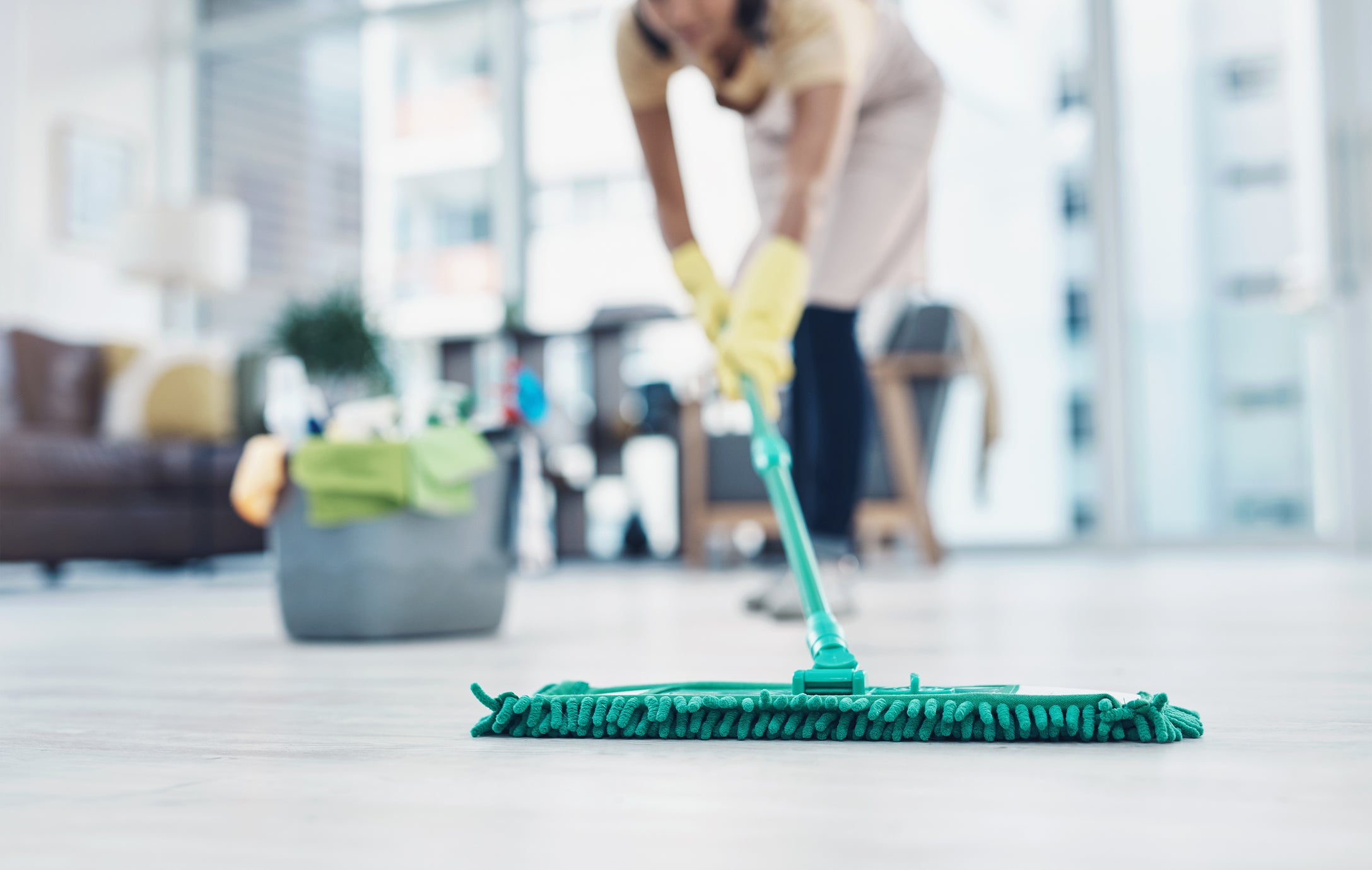
When spring arrives, it feels good to shake off the winter doldrums by giving our homes a good cleaning. Are there rooms in your home you feel like you should be cleaning better? We’ve got some tips and tricks for spring cleaning that will maximize the effectiveness of your efforts!
- Start at the doorways. Spring is a great time to switch out your doormat. When you do, put a doormat inside the door as well as outside to help keep dirt out of your home. To clean doormats, hose off the outside doormat and let it dry in the sun. Vacuum the indoor doormat, then flip it over and vacuum the underside to help free trapped dirt so you can vacuum it off of the floor.
- Do your windows. Windows are best washed on an overcast day because direct sun can cause streaking. Wipe with glass cleaner and a microfiber cloth, then dust the blinds or shades.
- Head to the kitchen. Spring clean your kitchen by tackling the following areas:
- The kitchen sink: if your kitchen drain smells bad, run some slivers of lemon rind through the disposal and follow it with cold water, or pour in some vinegar to refresh it.
- Microwave: Clean your microwave by filling a large microwave-safe bowl with a cup of water and some chopped-up citrus or several tablespoons of vinegar. Microwave it on high until it boils, then let it cool for five minutes before opening the door. You should be able to quickly and easily wipe away stubborn stains with a sponge.
- Granite Countertops: From time to time, use granite polish to restore the shine to your surfaces and help repel stains. Daily, wipe them down with a specialized cleaner.
- Refrigerator: Deep clean removable bins and shelves by taking them out and washing in warm, soapy water.
- Pots and pans: Remove burned on residue by simmering water with dish liquid on the stove, then wiping away anything that remains. Here’s a hack: ketchup, with a pinch of salt, will remove tarnish from copper cookware.
- Oven: If your oven isn’t self-cleaning, place a hot, wet cloth on the burned spots to soften them, then scrub with baking powder and a heavy duty pad before rinsing and wiping dry.
- Cabinets: Kitchen grime, a mixture of dust and grease, often coats cabinets. Running the exhaust hood while you’re cooking can minimize this, but while you’re spring cleaning, use special kitchen cabinet cleaners to cut through dirt without damaging the wood.
- Stainless steel appliances: A solution of 1 tsp dish detergent and 1 quart of hot water, rubbed on with a microfiber cloth, will bring the sparkle back to your stainless steel surfaces. Rinse with hot water and dry immediately.
- Junk drawer: Empty the drawer, then vacuum out the dust and crumbs. Sort through the contents before returning them in a more orderly fashion.
- Freshen up your living spaces. Vacuum the whole house, pulling furniture away from walls and vacuuming behind and underneath it. Vacuum the woodwork and the air vents, then switch to the upholstery tool and vacuum the furniture. Toss your window treatments and throw pillows into the dryer for 15 minutes on air-only, and then hang quickly so they won’t wrinkle. Take everything off the bookshelves and organize it, dusting the shelves before putting it back. Give the ceiling fans, hanging and recessed lights a good cleaning, and dust your molding.
- Move on to the bathrooms. Wash plastic or vinyl shower curtains in the washer on the gentle cycle with a few bath towels, then let them hang dry before showering. Declutter your makeup cabinet by tossing out expired items, then wash your makeup brushes with baby shampoo or Dawn dish soap and warm water. Spray cleaner on your grout, allow it to sit for several minutes, then scrub with a stiff brush and rinse. Then, pour a mixture of ½ cup baking soda and ¼ cup salt down the drain, followed by heated vinegar. Let it stand for 15 minutes, then run hot tap water for 30 seconds or so.
- Deep clean your bedrooms. Clean pillows and comforters, carefully reading the care label first. Vacuum your mattress, then sanitize it with a disinfectant spray, or use an iron or garment steamer to kill dust mites near the surface, then vacuum. Pack away the winter clothes in your closet and get rid of anything stained, damaged, or worn out. Do the same thing with the warm weather clothes you’re bringing out of storage, trying on anything you’re not sure about before putting it into your closet.
- Some of your personal items could probably use a deep clean. Power down your phone before cleaning it with a microfiber cloth, then a disinfectant wipe. Let it air dry for a few minutes, then wipe it dry with a clean cloth or paper towel. Do this to your TV remote, computer mouse, and other electronics, too. Clean out your purse, throwing away trash and organizing everything else. Wipe the exterior if it’s made of a durable material.
- Clean your cleaning tools. Freshen the washer by running a cycle with bleach or a washing machine cleaner. Use the crevice tool on your vacuum to deep clean your dryer’s lint filter, then vacuum under, around, and behind it. Clean out your vacuum and snip any threads or hairs snarled in the brush. Rinse your broom in warm soapy water or vacuum it with your vacuum cleaner hose.
If you need a place to store your things while you’re cleaning, or ready to find somewhere to pack away your winter gear, choose Pouch Self Storage. We’ve been operating mini-storage facilities since 1979 and we’re committed to keeping our clients’ belongings safe. Founded by John Yelland, who hails from Australia, Pouch Self Storage is named in honor of the kangaroo’s pouch- nature’s safe and secure storage spot. We’re an industry leader in design, building, and maintenance of self-storage facilities, and we strive to give our occupants the most advanced security systems available. At our nine Southern California facilities, you’ll find state-of-the-art computer monitoring systems that allow our self-storage managers to monitor the opening and closing of every storage unit door, 24 hours a day. For more information, call (800) 378-4598 or contact us through our website.
-
What to Do Before Storing your Boat
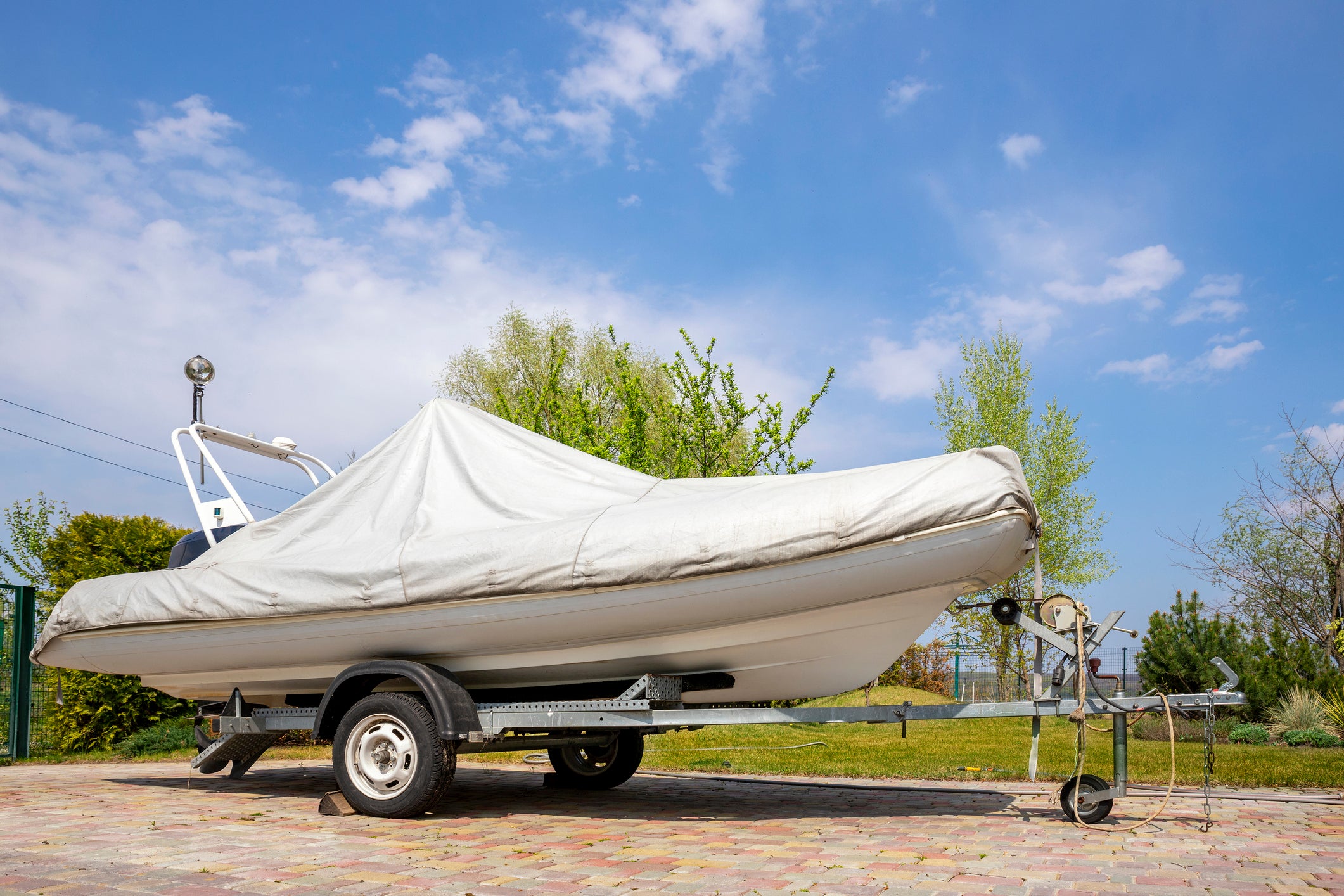
It’s wonderful to have a boat, but what do you do with it when you’re not using it? You could keep it in the water, but marina fees can be expensive. What’s more, storing your boat in the water leaves it vulnerable to thieves, vandals, and aquatic pests like barnacles and algae. There are many different options for dry storage, but which is the right one for you? Let’s look at some factors to consider and some tips for preparing your boat for storage.
- Indoor or outdoor? Storing your boat outdoors leaves it vulnerable to the elements, so keeping it inside is often a better option. If you have a garage on your property, you can store it there, but it may take up room needed for other things. You could also use a dry stacked storage warehouse, where the boat is stored with multiple other boats, stacked and removed with forklifts. These are sometimes hard to find, though, if you don’t live in coastal areas. Indoor storage at a storage facility is another good option, because storage facilities are secure and often offer climate controlled units. Of course, you could choose storage that’s between indoor and outdoor, storing your boat in covered storage at a self-storage facility. This affords you the security of a storage facility and protects your boat somewhat, but not completely, from the elements.
- What about security? Dry stacked storage is a secure place to leave your boat, and so is a self-storage facility. Storing it in your garage is somewhat secure, depending on the measures you take to protect it.
- Will you want to access your boat? If you store your boat on your own property, you’ll obviously be able to take it out any time you’d like. Self-storage also allows you to access your unit whenever you need to do so, using keypad security. While dry stacked storage is secure and protective, it is not a place that allows for easy access to your boat.
- How much are you willing to spend? The cheapest way to store your boat is to keep it on your own property. However, if that’s not an option, you’ll need to weigh the costs against the benefits of other storage facilities. A marina is very pricey, dry stacked storage less so, and an indoor unit in a self-storage facility is comparable to a dry stacked warehouse. Aside from storing it at home, the most cost-effective solution is to store it either outdoors or under a cover at a self-storage facility, but whether or not that is a good idea depends on how much you’re concerned about exposure to the elements.
Whenever you’re storing your boat, wherever you decide to keep it, there are a few steps to take before putting it away.
- Make sure it’s clean. Cleaning your boat before you store it will keep it from degrading in storage and will reduce the amount of time and energy you need to put into getting it ready when you want to use it. Wash the topsides, bottom, and deck, clean all hardware and trim, and treat blistering so it doesn’t get worse while the boat is stored.
- Flush out the engine. A freshwater flush will clean the lines and remove dirt, salt, and corrosion from the engine. If you have an outboard motor, take care to drain all water from the engine.
- Top off all fluids. It may seem counterintuitive to gas up your boat before you store it but filling the gas tank prevents condensation from building up while the boat is in storage. Change the oil and oil filter.
- Thoroughly inspect your boat. Check and lubricate all the small but important systems on your boat, including metal parts like hinges, latches, and push-pull switches.
- Dry out the boat. Leaving any moisture on your boat can lead to mildew when it’s in storage. Clean any standing water, remove cushions, and prevent mold and mildew by using a moisture absorber while the boat is stored.
- Gather all your gear. Lifejackets, ski ropes, and other water gear can collect dirt and moisture when left on a boat, so find them their own, separate storage place.
If you’re looking for a storage facility to store your boat, choose Pouch Self Storage. We’ve been operating mini-storage facilities since 1979 and we’re committed to keeping our clients’ belongings safe. Founded by John Yelland, who hails from Australia, Pouch Self Storage is named in honor of the kangaroo’s pouch- nature’s safe and secure storage spot. We’re an industry leader in design, building, and maintenance of self-storage facilities, and we strive to give our occupants the most advanced security systems available. At our nine Southern California facilities, you’ll find state-of-the-art computer monitoring systems that allow our self-storage managers to monitor the opening and closing of every storage unit door, 24 hours a day. Currently, we’re abiding by CDC recommendations and implementing social distancing, but you can still reach us by calling (800) 378-4598 or contacting us through our website.
